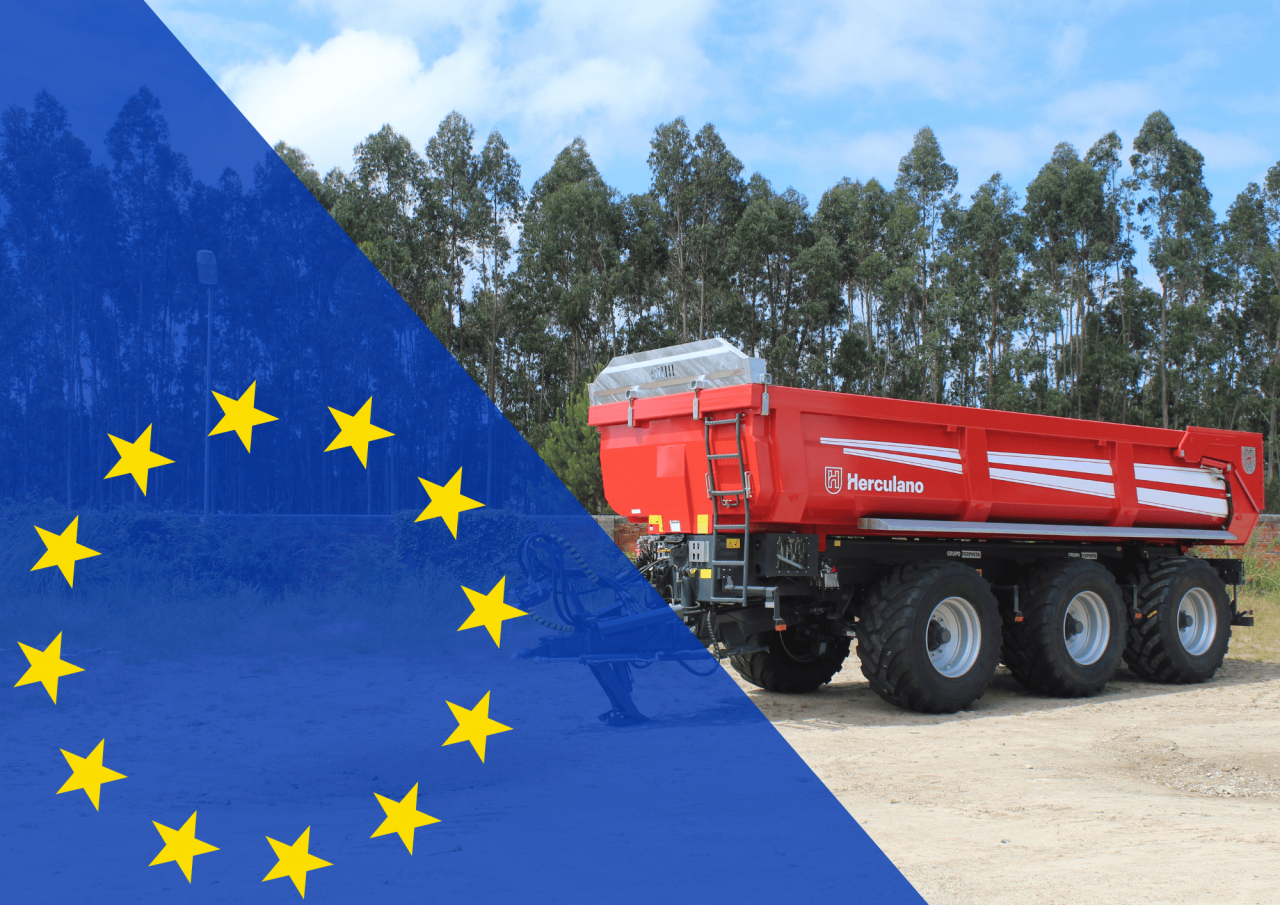Homologação Europeia: enquadramento e principais alterações

O que é?
O Regulamento (UE) N.º 167/2013 relativo à homologação e fiscalização no mercado de tratores agrícolas e florestais, seus reboques e equipamentos rebocados intermutáveis, estabelece as disposições técnicas e administrativas para a homologação na união europeia (UE), permitindo as fabricantes tirar proveito das vantagens do mercado interno europeu por via dessa homologação.
De acordo com o regulamento europeu, os reboques e os equipamentos rebocados intermutáveis são considerados veículos das categorias R e S. Esta diferenciação de categorias é importante, pois aplicam-se diferentes requisitos específicos consoante a categoria do veículo.
Este regulamento permite obter a homologação europeia, de veículos das categorias R e S, que até agora só podiam ser objeto de homologação nacional.
Visa simplificar e homogeneizar os procedimentos de homologação dos veículos a nível europeu, a fim de assegurar um elevado nível de segurança funcional, segurança no trabalho e a proteção do ambiente.
Também introduz algumas novidades importantes, especialmente no que diz respeito aos fabricantes de máquinas agrícolas, e a sua aplicação afeta também os utilizadores finais.
Em particular, este regulamento abrange os seguintes aspetos relacionados com os reboques (categoria R) e equipamentos agrícolas (categoria S):
- Massas máximas admissíveis em carga
- Dimensões
- Sistemas de travagem
- Velocidade nominal máxima
- Dispositivos de engate homologados
O regulamento é acompanhado de atos jurídicos técnicos específicos (os atos delegados), que completam a legislação especificando os pormenores dos requisitos a cumprir.
Consequentemente, os veículos alvo de homologação europeia podem assim ser comercializados em todos os estados-membros sem terem de cumprir requisitos adicionais. Apenas a sua utilização na estrada pode estar condicionada a requisitos das autoridades nacionais, nomeadamente do código da estrada aplicável.
Quando entrou em vigor?
O regulamento foi publicado, no Jornal Oficial Europeu, em fevereiro de 2013, mas apenas aplicável a partir de 1 de janeiro de 2016, estabelecendo um período de transição de 2 anos para permitir que os fabricantes se adaptassem à nova legislação.
Desde janeiro de 2018 que a homologação europeia passou a ser obrigatória para novos tratores agrícolas.
No caso dos reboques e equipamentos rebocados intermutáveis a sua aplicação é facultativa desde janeiro de 2016, pois podem continuar a ser homologados de acordo com a legislação de cada país, mas com a sua validade limitada ao próprio país. Contudo, se a homologação europeia for a escolhida, então esta será válida em todos os países da UE.
Algumas alterações introduzidas
Massas e Dimensões
As dimensões máximas de qualquer veículo da categoria R são as seguintes:
- Comprimento: 12 m;
- Largura: 2,55 m ou 3 m desde que sejam utilizados pneus para proteção dos solos ou existência de ferramentas necessárias para o funcionamento do veículo e estejam conformes a Diretiva 2006/42/CE;
- Altura: 4 m.
No caso dos equipamentos rebocados intermutáveis (categoria S), as dimensões máximas são:
- Comprimento: 12 m;
- Largura: 3 m (sem ter em conta as partes defletidas das paredes dos pneus no ponto de contato com o solo);
- Altura: 4 m.
A massa máxima admissível para veículos da categoria R e S de 1 eixo, é de 10 t ou 11,5 t consoante seja equipado com eixo não motor ou motor.
Os veículos de 2 eixos e 3 eixos têm como limites da massa máxima admissível, em carga, respetivamente 18 t e 24 t.
Para os veículos das categorias R e S, rebocados por lança rígida e rebocados de eixo central, considera-se que a massa máxima admissível do veículo é igual à soma das massas máximas admissíveis por eixo. Ou seja, a carga estática vertical significativa imposta sobre o trator deve ser tida em conta na homologação do trator.
Sistemas de travagem
Algumas alterações relevantes dizem respeito aos dispositivos de travagem e a tempos de resposta em ensaios de travagem. O regulamento europeu detalha em pormenor os requisitos aplicáveis aos diferentes tipos de travagem, dependendo da massa máxima admissível: mecânico, inércia, hidráulico e pneumático.
A homologação europeia exige para sistemas de travagem hidráulico ou pneumático, ligações de dupla conduta.
Velocidade nominal máxima
O regulamento introduz novos limites de velocidade, em alguns casos superiores aos permitidos em alguns países membros da comunidade europeia.
Contudo, mesmo o regulamento sendo válido para todos os estados-membros da UE, a sua aplicação tem de ter em consideração a legislação nacional aplicável. Portanto, mesmo que um reboque seja homologado com uma velocidade nominal máxima superior, o limite de velocidade em que pode circular é, em qualquer caso, legislado a nível nacional e sob total responsabilidade do condutor.
Dispositivos de engate homologados
Para garantir o correto acoplamento do trator e do reboque ou equipamento rebocado, o regulamento prevê a aplicação de dispositivos de engate homologados e os diferentes tipos de ganchos que podem ser instalados nos tratores.
A Herculano procura adotar as melhores soluções para fornecer reboques e máquinas agrícolas eficientes e alinhados com os requisitos mais recentes.
Com o objetivo de evidenciar a fiabilidade e segurança perante o mercado, posicionando-se ao nível das marcas de maior referência no mercado mundial, a Herculano dispõe de vários veículos certificados de acordo com a homologação europeia.
A opção estratégica de considerar a homologação europeia na certificação regulamentar dos produtos Herculano, representa o alinhamento da organização com os mercados europeus, privilegiando a uniformização do produto por padrões de qualidade e de segurança de utilização de excelência.



